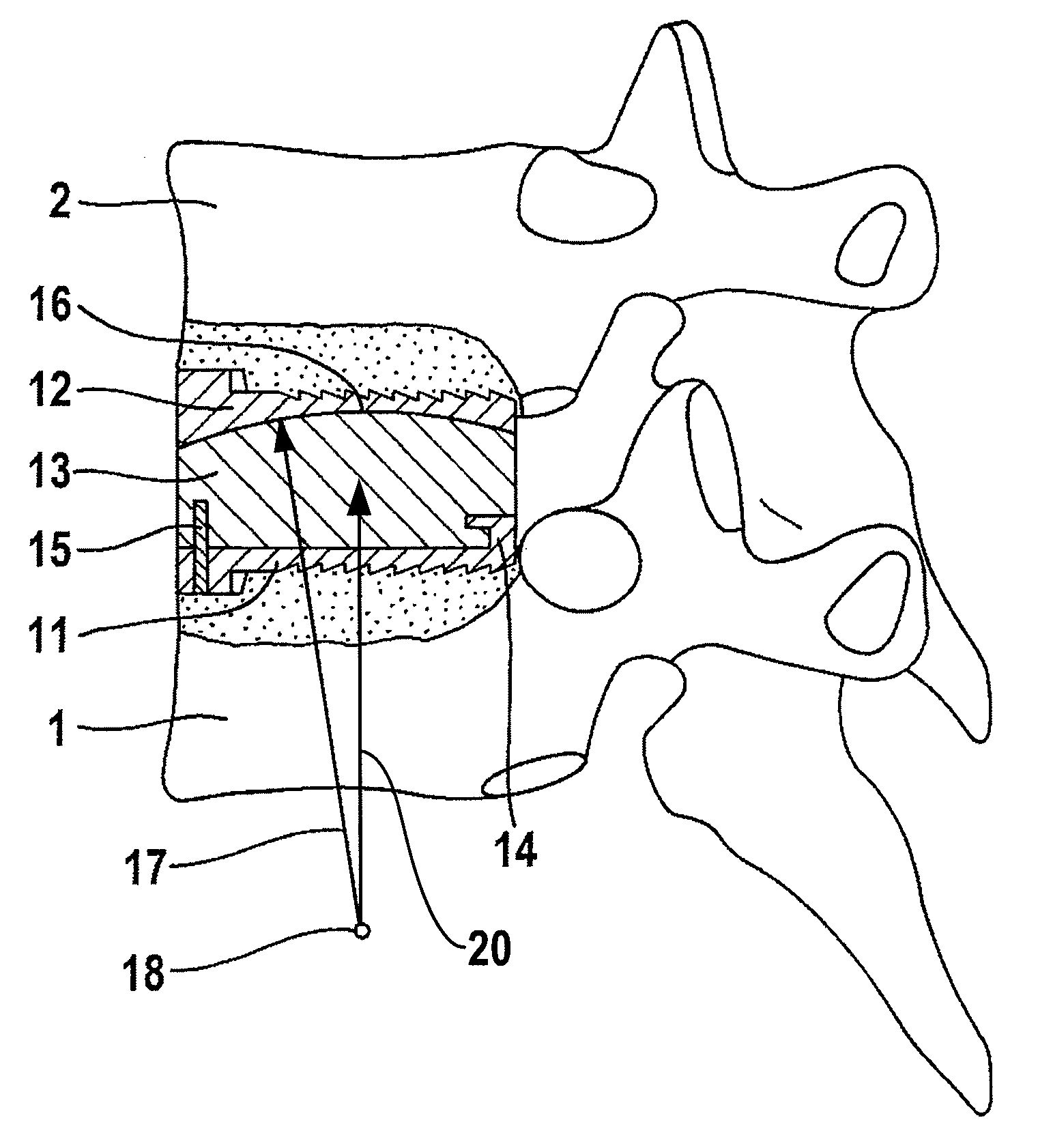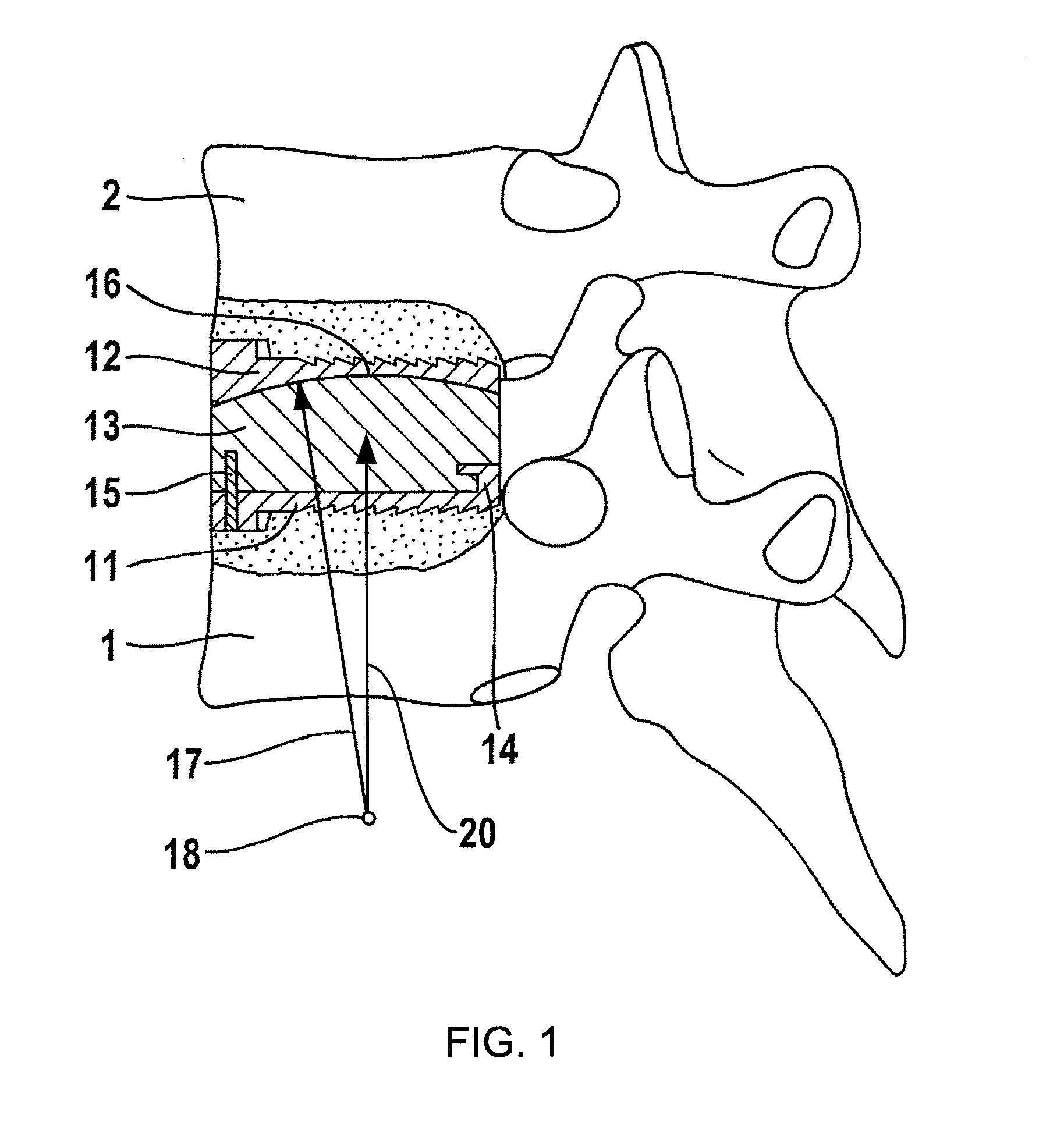Cervical intervertebral prosthesis system
a technology prosthesis, which is applied in the field of cervical intervertebral prosthesis, can solve the problems of too far away
- Summary
- Abstract
- Description
- Claims
- Application Information
AI Technical Summary
Benefits of technology
Problems solved by technology
Method used
Image
Examples
Embodiment Construction
[0010]An intervertebral prosthesis made up of a lower cover plate 11, an upper cover plate 12 and a prosthetic core 13 is fitted between the vertebral bodies 1 and 2. The prosthetic core 13 is held securely on the lower cover plate 11 by an undercut ledge 14, running along three sides of the prosthesis, and by a catch 15. With the upper cover plate 12, it forms a spherical slide surface pair 16 having a slide surface radius 17 and a center of curvature 18 which forms the center of movement of the hinge formed by the prosthesis. This means that the cover plates 11, 12 and the vertebrae 1, 2 connected to them are able to execute a relative movement with respect to one another which represents a rotation movement about the center 18 as long as the slide surface pair 16 alone determines the relative movement. In practice, other slide surfaces, namely the articular facets, are also involved in determining the relative movement, so that the relative movement actually taking place may devi...
PUM
 Login to View More
Login to View More Abstract
Description
Claims
Application Information
 Login to View More
Login to View More - R&D
- Intellectual Property
- Life Sciences
- Materials
- Tech Scout
- Unparalleled Data Quality
- Higher Quality Content
- 60% Fewer Hallucinations
Browse by: Latest US Patents, China's latest patents, Technical Efficacy Thesaurus, Application Domain, Technology Topic, Popular Technical Reports.
© 2025 PatSnap. All rights reserved.Legal|Privacy policy|Modern Slavery Act Transparency Statement|Sitemap|About US| Contact US: help@patsnap.com


